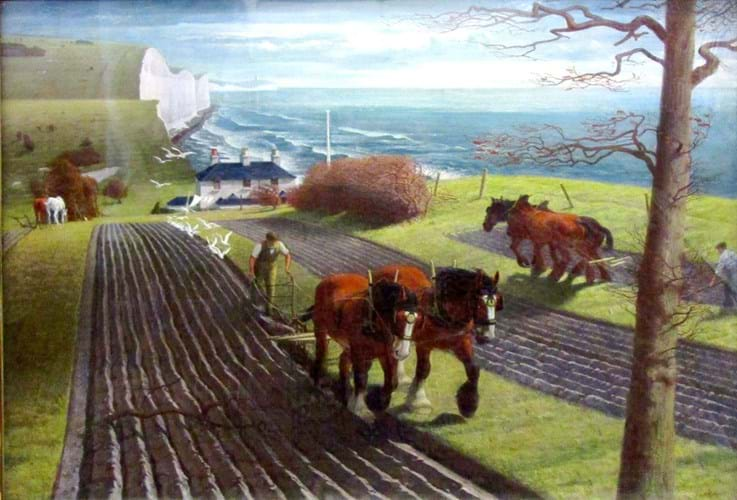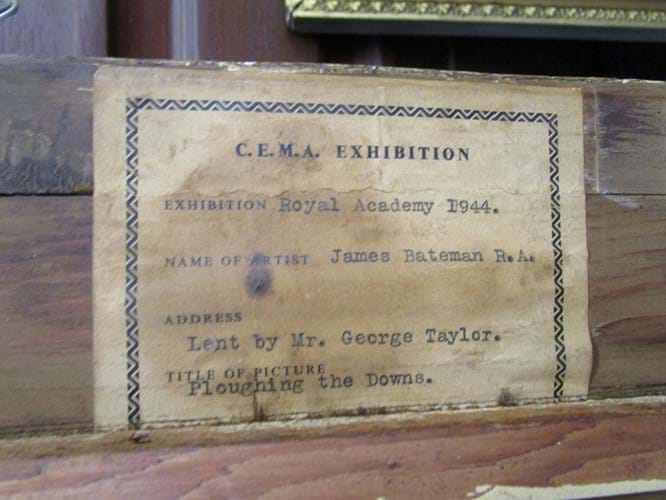Before the sale, the auctioneers were expecting the picture to draw interest – it had been valued at £9000 for probate back in 2000. They duly received a £14,000 commission bid and Littleton’s managing director and auctioneer Martin Homer said they “could have booked 30 phone lines” on the lot.
Rising in increments of £1000, it came down to a contest between two phone bidders after £18,000, eventually selling to a private buyer who outbid a member of the London trade.
The picture depicts a ploughing scene, a typical subject for the artist, although here the presence of the white cliffs along the coast of the South Downs – possibly at Birling Gap on the Seven Sisters – was somewhat unusual.
The 2ft 3in x 3ft 1in (69 x 95cm) oil on canvas was dated 1944 and was one of the Kendal-born artist’s Royal Academy exhibits. The auctioneers said it was in good clean condition having been kept under glass.
It came to auction as part of a consignment of eight works from a local source and the painting was understood to have been in the vendor’s family for many years. The owners also supplied an envelope along with the picture which contained some details illustrating the provenance including the original receipt when it was sold in the year it was painted for £250.
Bateman does not appear regularly at auction but a few rural scenes tend to emerge on the market each year. A smaller oil on paper laid down on board titled Appleby Horse Fair appeared at Sworders in Stansted Mountfitchet in December last year, fetching £3500 against a £600-800 estimate.
The highest price for the artist at auction before the Littleton sale appears to be the £25,000 made by Westmoreland Farm, an oil painting from 1935 that sold at Bonhams in November 2000.
Bateman came from a farming background in Cumbria and studied sculpture at Leeds College of Art between 1910-14. He took up painting seriously after service in the First World War, moving down south to teach at Cheltenham School of Art and then at Hammersmith School of Art.
Examples of his portraits and paintings of cattle auctions and other agricultural subjects are now held in a number of public collections in the UK, including the Tate and the Victoria & AlbertMuseum, although none depict a dramatic coastline like the lot sold by Littleton.







